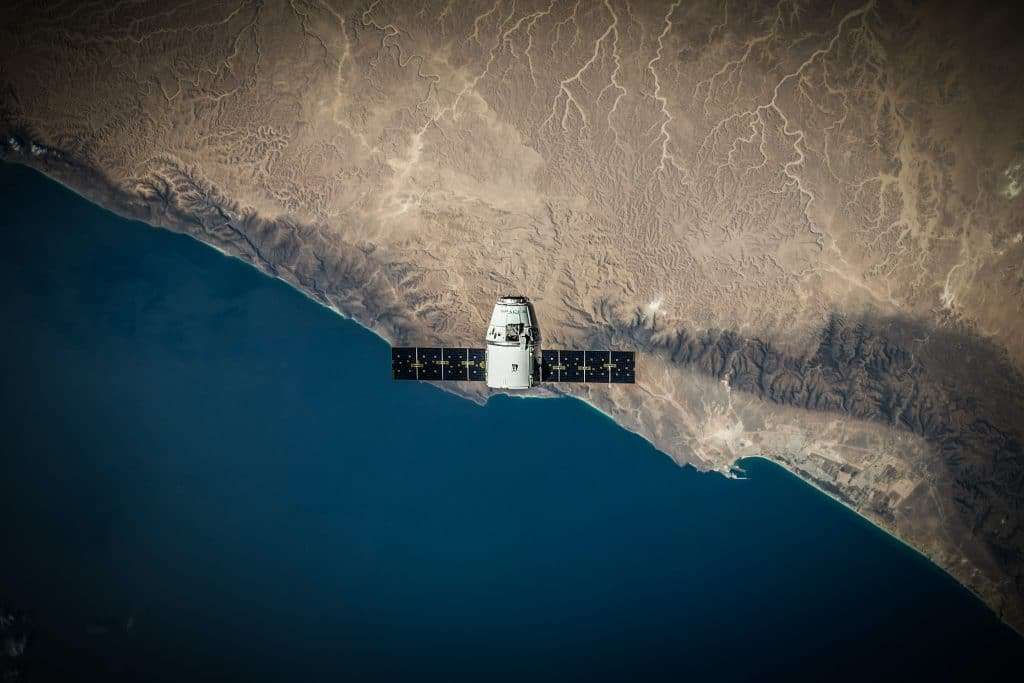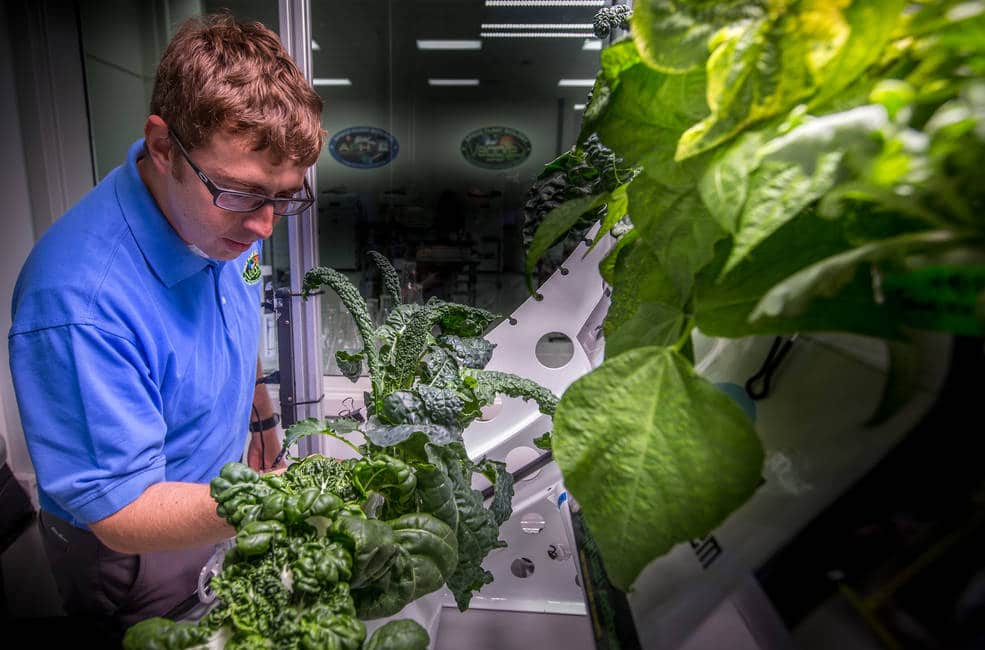Can outer space exploration ever be sustainable? As the private space travel industry expands, and more satellites make their way out of the exosphere, the industry is facing a reckoning.
Space exploration, for all its well-meaning goals of bringing more understanding about the universe and our place in it, is costly and resource-intensive.
And as the consumer space race heats up, so too does the impact here on earth. Private space travel could increase the number of trips ten-fold.
Despite Elon Musk’s sustainability efforts with Tesla Motors, for example, his SpaceX operation emits 112 tons of refined kerosene with just one rocket launch. That’s about 336 tons of CO2 — the equivalent of driving around the planet 70 times.

“The carbon footprint of launching yourself into space in one of these rockets is incredibly high, close to about 100 times higher than if you took a long-haul flight,” Eloise Marais, a physical geography professor at the University College London, told Vox’s Recode. “It’s incredibly problematic if we want to be environmentally conscious and consider our carbon footprint.”
The European Space Agency calculates that there are about 36,500 objects greater than 10 cm, 1,000,000 objects from greater than 1 cm to 10 cm, and 330 million objects from greater than 1 mm to 1 cm floating in outer space as a result of human activity.
“As space debris poses a problem for the near-Earth environment on a global scale, only a globally supported solution can be the answer,” ESA explained on its website. “This creates the need for a subset of internationally accepted space debris mitigation measures.”
Now, Japanese startup Interstellar Technologies, says it’s preparing to test its Zero rocket by 2025. “We think that this rocket will change the market,” Keiji Atsuta, Interstellar’s business development general manager, recently told SpaceNews.
The rocket could help to meet the growing demand for small-scale satellites across the world. In July, the company announced plans to fuel the Zero rocket with liquid biomethane — fuel made from livestock manure.
The sustainable future of space
With its latest $50 million funding round, satellite producer E-Space, says it’s working on a constellation of 300,000 satellites with sustainability in mind.
“We’ve so fundamentally changed the design of [satellite architecture] that we’re not really going out with a hardware tender for people to go build things,” founder Greg Wyler, who also founded megaconstellation startup OneWeb and the O3b Networks satellite operator now owned by SES, said in a statement. E-Space operates two separate entities in the U.S. and in France.
According to Wyler, sustainability is “at the heart of [E-Space’s] architecture.” The company has pledged to build satellites that “minimize the debris from objects they hit and capture debris they contact to prevent further collisions.”
The U.K. Space Agency recently announced it is providing £1.7 million in funding for 13 new projects aimed at supporting sustainable space operations and debris collection similar to E-Space’s efforts.
Space debris can stay in orbit for hundreds of years and is quickly becoming one of the satellite industry’s biggest challenges. Satellites are vital for communication and research, such as climate change monitoring.

“Like debris on Everest, the first generation of space exploration and satellite launch has left millions of pieces of dangerous satellite fragments and 4,000 redundant satellites in orbit,” Science Minister George Freeman said in a statement.
“As our reliance on satellites for everyday activity grows, and the U.K. becomes a leading hub of small satellite design, manufacturing and launch this year via Virgin Orbit in Cornwall, this debris now poses a serious threat to our £16 billion space sector.
“That’s why we have made debris mitigation and removal – and the long-term importance of space sustainability – key elements of our National Space Strategy.”
The minister says the newly funded projects will put the U.K. at the forefront of both “protecting the space environment for future activity, and accelerating UK technology leadership.”
Among the projects receiving funding are several AI tools; one can work autonomously to avoid collision, while another can coordinate spacecraft to fire at debris and then dispose of it.
“Space Sustainability is a key priority for the U.K.,” Andrew Ratcliffe, Chief Engineer at the UK Space Agency and Head of Delegation, said at a United Nations event last week.
“The U.K. acknowledges the important work of the Inter-Agency Debris Coordination Committee in developing a common understanding of the sustainable use of Earth orbit and continue to use this work and their associated guidelines to inform our decision-making processes,” he said.
“Pertinent to recent events the U.K. encourages adherence to the Space Debris Mitigation guidelines which seek to minimise the potential for on-orbit break-ups which includes preventing intentional destructions which will generate long-lived orbital debris.”
Climate change from space
Wyler says what we do in space could help us here on earth, too.
“One of the best ways to understand and manage Earth is from space,” he said. “We designed E-Space to democratize space, to enable the collection of continuous data about our planet with real-time information of sensors and devices across the world to combat climate change, and to upgrade our electric grids,” Wyler said.
“Importantly, we’ve built sustainability into everything we do. We are designing our systems to not only prevent space debris generation, but to eventually actively reduce space debris so generations to come will be able to access the power of space.”

E-Space likens itself to Amazon Web Services, which it says “enabled a new generation of services across every industry built on near-infinite low-cost cloud infrastructure.” E-Space says it will be a foundational platform “to help governments and large companies build space-based applications in a capital light manner.
E-Space says it will provide the world’s first federated systems that can dynamically extend satellite capacity for a multitude of applications, ranging from secure communications to managing remote infrastructure.”
With its new generation of affordable satellites, Wyler says E-Space is poised to provide “unparalleled” security and resiliency.
E-Space cites five sustainability criteria: minimizing satellite debris on collision, capture and deorbit debris, a high-drag fail-safe configuration for deorbit, 100 percent demise upon re-entry to the earth’s atmosphere, and small cross-section satellites, which E-Space says are less vulnerable to collision and resulting debris.
Sustainable space food
Other efforts are underway to make space travel more sustainable, too. Last month, NASA and biofermentation startup Nature’s Fynd completed research work aimed at developing a micro-gravity biofilm-biomat reactor, which could allow astronauts to grow a highly nutritious vegan protein in space.
The startup, which has raised more than $500 million, including backing from Bill Gates, discovered the unique protein in Yellowstone National Park geysers. It’s currently producing sausage and cream cheese with vegan protein.

“The developments made by Nature’s Fynd with the NASA SBIR/STTR program have opened doors to unique and viable options for sustaining life in space, and as the world increases its focus on protecting our people and planet, the company’s biomaterials and bioreactors exemplify one potential path for combating climate change on Earth,” NASA said in a recent statement.
In 2016, NASA developed what it called “The Veggie,” a “space garden” unit that would allow for the growth of “salad-type crops,” and give astronauts access to fresh food. Thus far, The Veggie has been successful, growing a variety of crops including three types of lettuce, Chinese cabbage, mizuna mustard, red Russian kale, and zinnia flowers.
NASA says it’s looking at growing other foods including tomatoes, peppers, berries, and beans. It says besides being a healthy alternative to dehydrated space food, the antioxidant-rich plants would provide space travelers the added benefit of protection from space radiation.
Related on Ethos:


